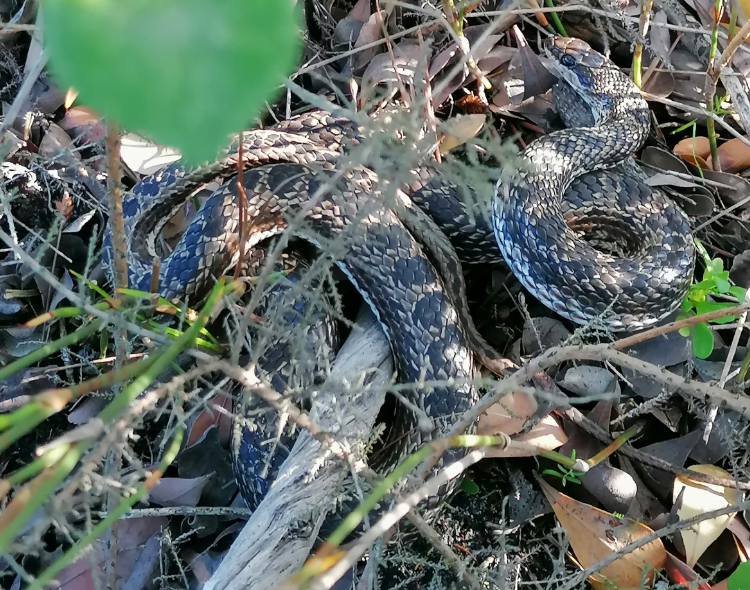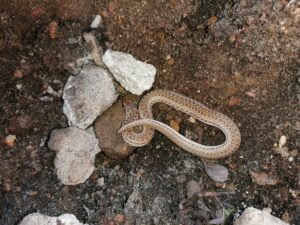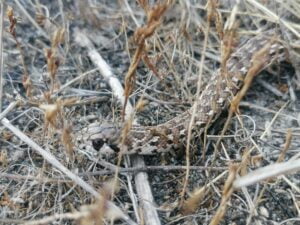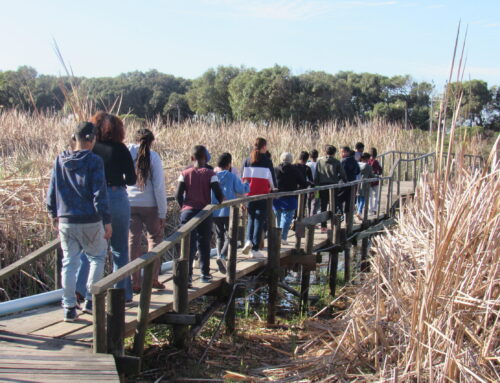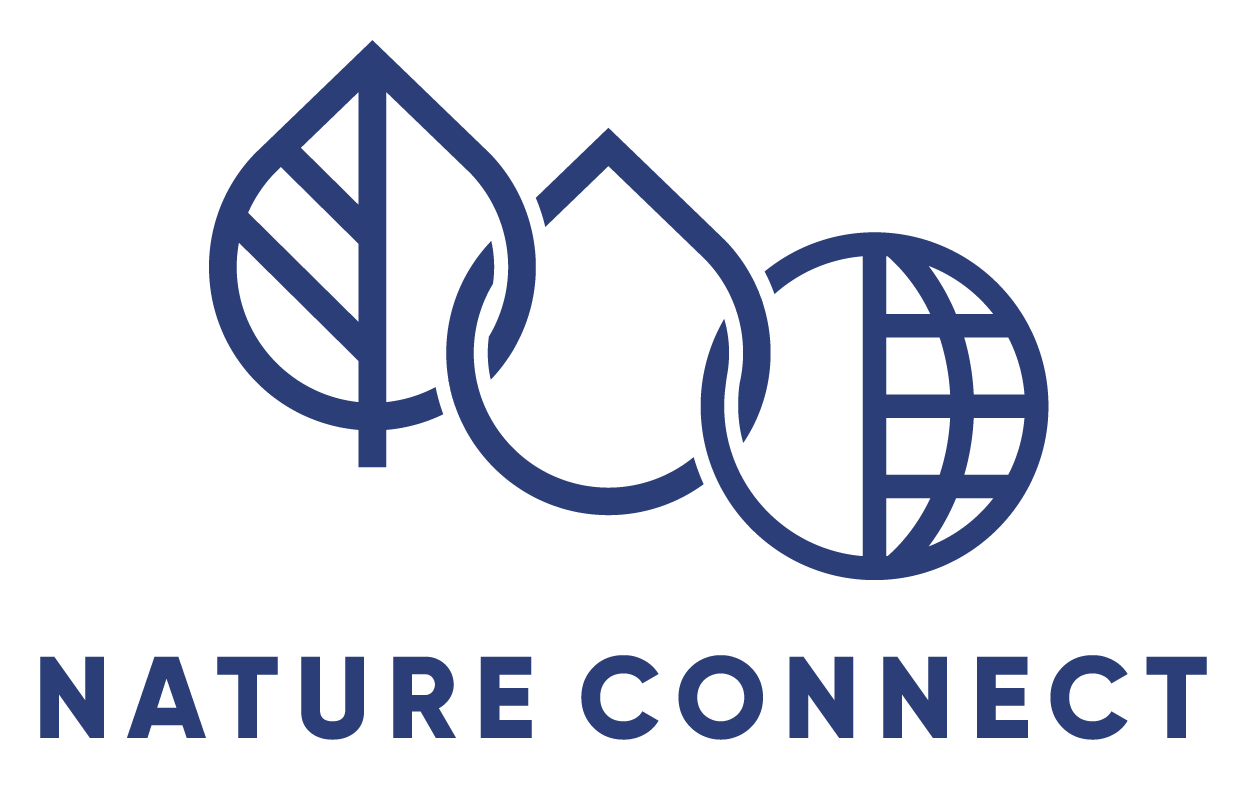Imagine having no legs, no arms, no ears, and all your organs squished into a long worm-like body, yet people still fear you. Snakes have unfortunately gotten an alarming reputation due to fallacies passed down from generations and watching movies that portray snakes as human-killing machines. The scarier thought is the misleading information people receive about snakes. Let’s debunk some of the myths about snakes through celebrating World Snake Day.
Let’s understand snakes
Snakes have a fascinating anatomy with muscular elongation and are limbless animals that belong to the class Reptilia, under the suborder Serpentes. People often feel intimidated by snake eyes as they seem to have a disconcerting stare. Unlike you and me, they lack moveable eyelids, but instead have translucent protective eye caps called brille. Many believe them to be slimy but are neither wet nor slimy, their skin is covered in keratinised scales that overlap and may be keeled, smooth or granular which protects them from abrasions and dehydration. Their reflective shiny scales may give the appearance that they are wet though. As they grow they get too large for their skin and undergo a process known as ecdysis, which is the shedding of their old skin. As with many mammals that shed skin in tiny flakes, their skin comes off almost entirely in one shed including their brille. Ecdysis in snakes can occur between four and twelve times a year, in favourable conditions. As with other reptiles, they are ectotherms, meaning they rely on external heat sources to maintain their internal body temperature. This directly relates to their level of activity.
Their muscular bodies are made up of 200 to 400 vertebrae which allow them to be incredibly flexible. They move using various types of locomotion depending on their habitat and circumstances. These comprise of the common S-shaped movement called serpentine, and others such as side-winding, concertina, and a caterpillar-like motion.
Contrast to popular belief that snakes are mindless and lack cognitive function, they in fact have complex brains that are highly cognitive which assist them to be exceptionally in tune with their surroundings. Though they lack limbs and ears, their sense of smell is heightened which is facilitated by their nose and tongue. This important olfactory function provides snakes with a way to process chemicals from their surrounding environment. Their flicking forked tongue collects chemical particles from left and right, and transports signals to the Jacobson’s organ at the top of their pallet which then processes the information received. Some burrowing snake species have relatively poor eyesight, while arboreal and diurnal snakes have more refined vision. Snakes see in various detail and some use infra-red vision to locate prey while also using heat sensing pits around their lips to detect heat emitted by warm blooded species. The information is then transmitted to the brain and creates an image of the specimen. Lacking ears sounds like it could be a major disadvantage, however, snakes are able to feel vibration through the ground and air at different frequencies and wavelengths. This is definitely to their advantage.
With over 3 000 species of snakes in the world, only about 600 are venomous, with the rest being non-venomous. The non-venomous snakes subdue their prey by constriction using their powerful muscles. As their coils wrap tightly around their victim it stops the blood supply and evidently they die of cardiac arrest. While venom is a mixture of highly specialised saliva that contains a complex mixture of proteins that are used to immobilise and digest prey. The Elapidae family of snakes, such as cobras and mambas, use neurotoxic venom that attacks the nervous system causing respiratory distress and paralysis. Snakes in the Viperidea family, such as adders, use cytotoxic venom which is cell destroying venom that causes necrosis of the skin. Lastly the family of Colubridae, such as boomslangs, use haemotoxic venom that destroys red blood cells, thus disrupting the bodies blood clotting abilities.
The feeding process may take hours depending on the size of the prey, as they generally swallow it whole. Their jaw can dislocate from the skull and is also divided into two parts that are held together loosely by flexible tissue allowing them to swallow prey much larger than them.
Though some may be potentially lethal to humans, snakes are not out to hunt or kill us. As the human population increases, their habitats are shrinking and development is taking over, creating human-animal conflict as people come into contact with them. Snakes also tend to take cover around human dwellings with poor housekeeping. Overgrown gardens, rubbish piles, wood piles and garden refuge often attracts rodents resulting in snakes coming to hunt them. However, they may also be coming to seek shelter. Unfortunately, it is often the snakes that get the short end of the stick as people tend to kill them out of fear or misconceptions.
Many snake lovers feel a sudden surge of joy at the sight of these majestic reptiles, but they know to respect the snake’s boundaries. But for those not accustomed to snake encounters, coming into contact with them unexpectedly can be a scary experience and hence we should educate ourselves and others on how to react in such situations. Snakes occur on every continent apart from Antarctica, but only about 7 % of all snake species are able to potentially kill humans. When encountering humans, the majority of snakes will try to flee. However, if it is cornered it will try to defend itself by displaying some form of threat to warn you off. This can be a range of warnings from puffing themselves up, raising their head from the ground, hooding up, spitting venom, lunging out, and hissing. Their last warning will be to deliver a dry bite (as they likely see it as a waste of their precious venom, as humans are not seen as a meal), or as a last resort they may inject venom.
A few hints when coming into contact with snakes:
- Avoid sudden movements, this should draw less attention
- Watch the snake from a safe distance and call an expert to remove it
- Do not try to get close for a photo
- Do not try to handle a snake without being able to confidently identify it
- Back away slowly
- Always wear hiking boots and long pants when out in nature
These highly specialised predators fill an essential role in the ecosystem by maintaining balance in the food web. They serve as prey to many other animals and as a predator in regulating rodent populations, thereby preventing diseases and infections that can be transmitted to us.
It should be everyone’s responsibility to be aware of snakes in your area and to maintain your property where they may find refuge. Nature Connect’s GreenSkills Development programme offers an accredited short course in managing venomous animals, which includes snake handling. This course enables people to identify snakes, capture snakes and basic first aid for emergencies. If you would like more information, or to attend this short course, then get into contact with our Green Skills training manager Letasha Hesqua via email, [email protected].
What you can do on World Snake Day
- Visit a reptile conservancy to view and learn more about a variety of snakes in your area
- Attend a snake awareness session
- Research more about snakes to understand their behaviour
- Share accurate information about snakes on social media and with your friends and family
- Host a snake drawing class with others

